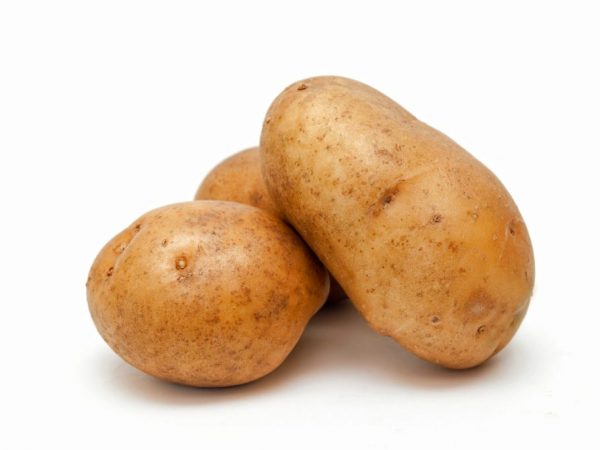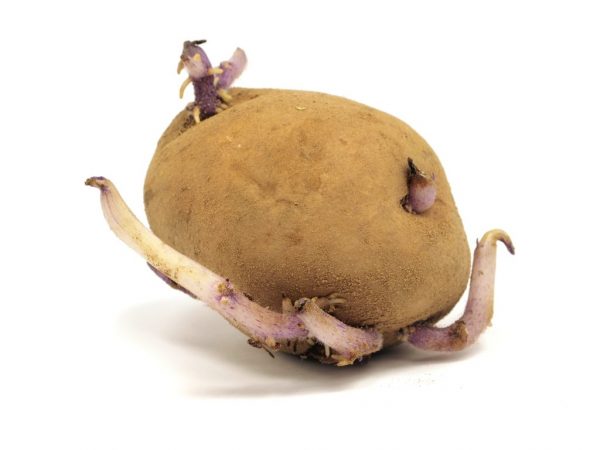Potato variety Volat
Today, potatoes are included in many dishes. At the moment, the potato crop is rapidly appearing in almost every household plots. Many gardeners have stopped buying finished products in the markets because it is very easy and interesting to grow and take care of root crops. There are various types of potatoes that gardeners choose depending on the requirements for growing conditions and the result they want to get. The most famous and unpretentious species in the present period is the Volat potato.

Potato variety Volat
Characteristics of potatoes
The Volat variety, or simply the Volot among the people, is a new kind of Belarusian selection.
The description indicates that the volat potato is a mid-season table species. Suitable for cultivation on light and medium-textured soils. The proposed planting saturation for sale is 48-52 thousand tubers / ha, on seed sites - 55-58 thousand tubers / ha. Volat tolerates drought well and, despite the fact that it is a new variety, has excellent keeping quality. The dormant period of tubers is average. Volat is not subject to mechanical damage. Productivity up to 62.4 t / ha.
Fruits are oval, yellowish, eyes are small, red. It blooms with white inflorescences. Excellent nutritional properties, used for cooking type B. Starch is contained in an amount of 11.2-19.0%. This type of potato is characterized by a good vitamin C content - 29.9%. Also, in the fruits, an abundant protein content can be noted, which establishes its great biological significance.
Benefits of the Volat variety
- Drought tolerant.
- Potatoes have an average physiological dormancy interval for tubers.
- Resistant to injury.
- Possesses good keeping quality.
Many summer residents, who have repeatedly planted potatoes in their garden, speak only positively about the new variety of volat. Low costs, minimal effort in planting and harvesting, and besides, rational resources spent in processing, make it possible for the volat to take advantage of many varieties.
People's impressions of its nutritional properties expands the list of advantages of this species. The delicious taste and attractive appearance of the tubers give an excellent representation of the Volat variety.
Preparing tubers for planting
Perfectly sowing potatoes must be selected in the garden. Passing through the beds, highlight strong and benign bushes with a sharp eye. Mark them with pegs or a label. These bushes must be dug separately and medium fruits for seeds must be selected for them. For breeding, fruits weighing 40-60 grams are good. In order to plant large potatoes before cutting it, you need to adhere to some parameters.
At the beginning, you should divide the potatoes so that at least three eyes remain in one half.Then, after any cut of the root crop, the knife must be treated with a solution of potassium permanganate (dipped in a vessel with this substance). The problem is that during this operation, the threat of infection of the fetus with viral and entero-bacterial diseases increases.
Sprouting potatoes for planting
For early harvest of potatoes, experts recommend sprouting and planting greenery first. The description indicates that this method also helps to increase the immunity of potatoes. A germinated species can be planted early, it will not be as susceptible to diseases as a non-germinated one. 3-4 weeks before disembarkation, you need to start this procedure. For this purpose, the potatoes are poured into boxes in one or two rows and brought to a place with a temperature of 15-20 degrees, while at night, planting material must be removed to a place where the potatoes will be fresher (basement or garage), in which the night temperature 5-8 degrees.

Tubers must be germinated before planting
To prevent the rudiments from being damaged, direct sunlight is not allowed on the fruits (diffused light is required for the planting material) - otherwise the rudiments will deteriorate.
By the end of the process, the sprouted fruit will acquire a greenish tint, green rudiments will appear on it, not exceeding 1-2 cm long. This is a sign that the potatoes are ready for planting. Thanks to this procedure, sprouted potatoes can be planted even at a soil temperature of 5 degrees, while non-sprouted ones - 8 degrees and above. Of course, the sprouts must be carefully monitored to prevent unwanted growth in length. We saw that the sprouts had grown to the required length, and sowing only after a couple of weeks (it happens and the like) - put the container with sprouted potatoes in the cellar, then the germination process will slow down.
Planting recommendations
If you sow potatoes in a garden where paprika, nightshade, tomatoes and other types of similar crops were previously grown, then the collection of a good harvest will be in question. Directly these crops, like potatoes, are damaged by the same pests and diseases. For this reason, you need to plant a volat where you grew peas, beans, cucumbers or onions last year.
Experts have found that an acceptable period for planting potatoes is when the ground at a depth of 10-12 cm heats up to 8 degrees. For the south of the Republic of Belarus, rational landing dates are formed in the second - third decade of April, for the center of Russia - in the third decade of April - first decade of May, for the northern regions - in mid-May.
Vegetable growers' mistakes
The main mistake of vegetable growers is that when planting potatoes tightly, many believe that if they planted more fruits, then the harvest will be greater. In fact, this is not the case. The ideal sustained distance is considered to be 30-35 cm. The explanation for this opinion is simple: nowadays, many tuberous varieties are often formed, when 15 or more tubers are obtained from one unit of product.
During thickened planting, these tubers come out small. It is also necessary to maintain a distance between the ridges of 60-70 cm. And to form a sufficiently high ridge, the potatoes need to be hilled two or three times. In addition, because of the high ridge, Colorado beetles and other harmful insects will not get on the potatoes, so your harvest will be perfectly preserved.
Diseases and pests
Diseases such as stem nematode, rot and scab of various types cause significant damage to the culture. In the majority of cases, key preventive measures can help to exclude potato infections:
- After harvesting potatoes, it is advisable to grow lupins, winter crops, oil radish, mustard in this area, after plowing the vegetation into the ground for humus.
- It is good to plant types of potatoes that are suitable for the conditions of the area.
- Fertilizers should be used in a well-rotted version (compost, humus), nitrogen fertilizers should not be used often.
- Gardeners need to strive not to injure the tuber during the harvesting period, and those fruits that have nevertheless spoiled should not be left for long-term storage.
- After harvesting, all potato tops must be dried and burned.
- It is recommended to create the necessary conditions in order to preserve potatoes with optimal temperature, humidity and good ventilation in the vegetable store.
The description indicates that this species bears excellent fruit for many years and, with proper care, is not damaged by common diseases and pests. But also in the description for the variety it is indicated that certain microbes can bring changes in the duration of the potato's existence. If potatoes or other vegetables that are not resistant to viruses grow in the adjacent beds, then viruses and insects have every chance of getting viruses and insects from this area along with aphids to your garden.
Inspection of landings
You should carefully examine all the bushes, without exception, when the plant grows 10-15 cm long and select from them those that have twisted leaves. Their fruits can be used for food, but should not be used as seeds. Plants with microbes have a smaller number of tubers, for this reason, only those bushes with a significant yield should be separated for seeds. If you adhere to elementary requirements, then you can significantly extend the life of this variety.
To protect against diseases, the method of combining germination with dusting with wood ash before planting seeds has proven itself well. Wood ash contains a large amount of trace elements required for the growth and formation of a crop.
For dusting 50 kg of potatoes, a total of one kilogram of ash is required. If you notice that you do not have enough ash, then the tuber can be treated with solutions of mineral fertilizers before planting. To this end, before planting, the tubers are sprayed with a solution of nitrophoska (ten grams per one liter of water), ammonium nitrate (fifteen grams per one liter of water) or boric acid (one gram per one liter of water).


